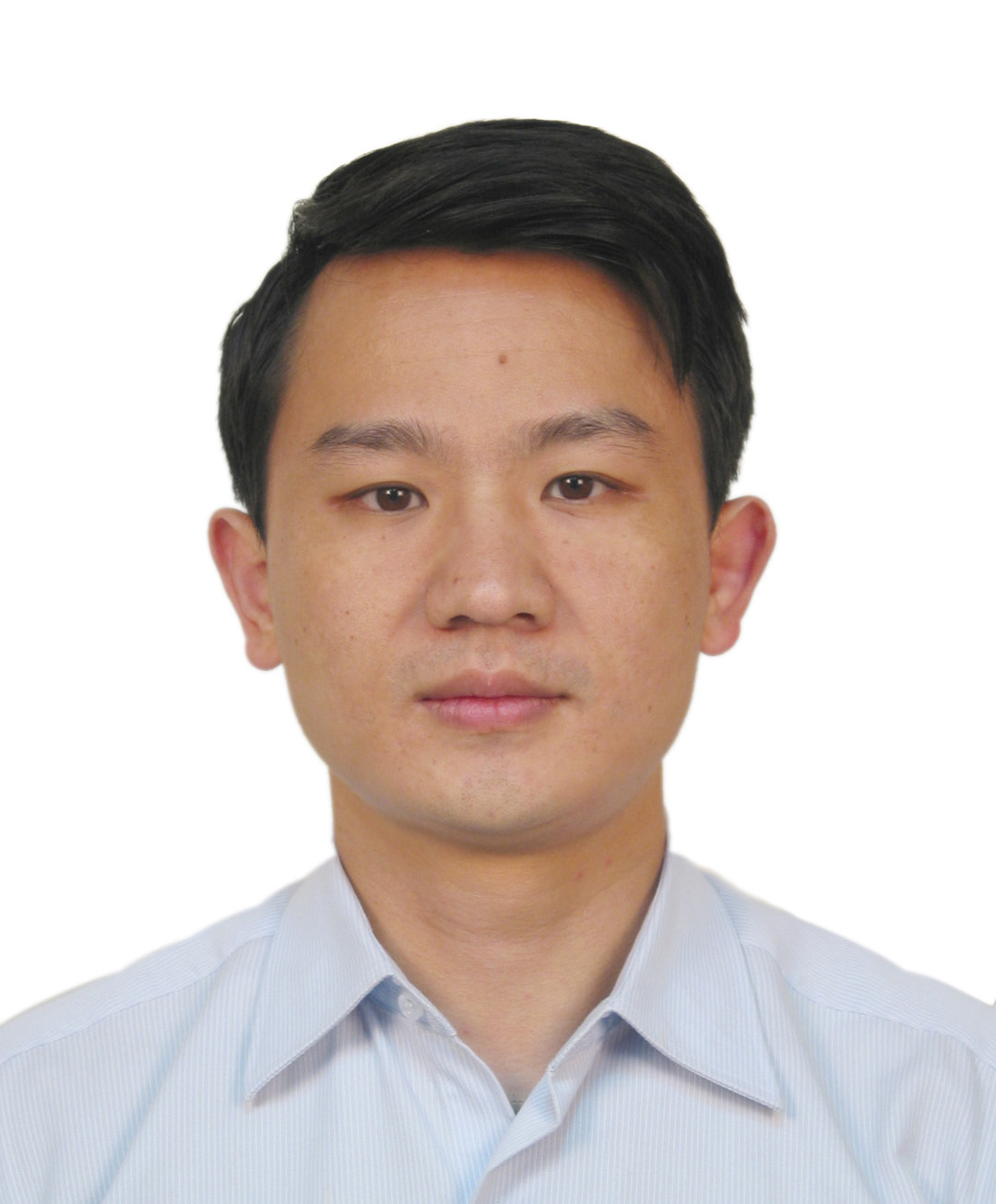基本介紹
- 中文名:戴曉明
- 外文名:無
- 國籍:中國
- 民族:漢
- 職業:教授,博士生導師
- 主要成就:圖樣分割多址接入的提出者
- 學歷:博士
獲獎專利,科研項目,論文論著,主要貢獻,
獲獎專利
[1]戴曉明“數據處理方法、無線通信傳送裝置和無線通信接收裝置”專利號:CN200410095544.7
[2]戴曉明“一種基於信道估計的速度測量方法及裝置”申請號:CN201210359122.0
[3]戴曉明“一種多輸入多輸出數據檢測方法及裝置”申請號:CN201210361158.2
[4]戴曉明“RI確定方法和設備”申請號:CN201110316341.6
[5]戴曉明“Code evaluating device, code evaluating method, wireless communication system, base station and mobile station”專利號EP1998460A4
[6]戴曉明,張艷,徐紅艷,周海軍“一種傳輸、接收CDMA擴頻符的方法及裝置”申請號:CN201210018894.8申請日期:2012-01-20公開號:CN103220237A公開日: 2013-07-24
[7]戴曉明,黃琛,唐勝志“一種信號檢測的方法及裝置”申請號:CN201110067978.6申請日期:2011-03-21公開號:CN102148779A公開日:2011-08-10
[8]戴曉明,譚鳳鳴,康紹莉,周海軍“一種套用於CDMA系統的擴頻通信方法及裝置”申請號:CN201210019195.5申請日期:2012-01-20公開號:CN103220013A公開日:2013-07-24
[9]戴曉明,黃琛,唐勝志 “一種信道估計方法及裝置” 申請號:CN201110405340.9申請日期:2011-12-08公開號:CN103166877A公開日:2013-06-19
科研項目
華為技術有限公司“5G通信關鍵技術研究”負責人
中興通訊股份有限公司“面向5G的基於稀疏編碼矩陣的非正交多址研究”負責人
電信科學技術研究院“新型多址接入關鍵技術研究”
北京小米移動軟體有限公司 “面向5G的關鍵技術研究”
國家自然科學基金重點項目“時空一致性的無線接入架構與關鍵技術研究”項目編號61431001,主要負責全雙工干擾刪除關鍵技術研究。
國家863計畫重點項目“5G新型調製編碼技術研究開發”,第二負責人。
中國移動研究院項目“關於5G總體設計、關鍵技術研究及標準化-新型多址技術評估與方案設計”負責人
展訊通信項目“第五代通信中新型多址方案設計”負責人
是德科技(Keysight,原安捷倫儀器)全球大學研究項目“第五代非正交多址接入方案研究”負責人
中央高校基本科研業務項目“下一代移動通信系統(5G)超密集組網關鍵技術研究”負責人
論文論著
以第一作者身份在國際刊物和國際學術會議上發表40餘篇學術論文,其中IEEE Trans. 系列期刊(SCI)文章12篇(JCR二區5篇)。
[1]Dai Xiaoming, “Allele gene based adaptive genetic algorithm to the code design,”IEEE Transactions on Communications, vol. 59, no. 5, pp. 1253-1259,May 2011. (Impact factor: 1.98)
[2]Dai Xiaoming, Kenichi Higuchi,Z. Zhang, K. Long, S. Sun,and Y. Wang, “Enhancing the performance of the quasi-ml receiver (detector plus decoder) for coded MIMOsystems via statistical information,”IEEE Transactions on Vehicular Technology, vol. 99, June 9, 2015, DOI 10.1109/ TVT.2015. 2443021.(Impact factor: 2.62)
[3]Dai Xiaoming, R. Zou, S. Sun, and Y. Wang, “Reducing complexity of quasi-maximum-likelihood detectors through companding for coded MIMO systems,”IEEE Transactions on Vehicular Technology, vol. 61, no. 3, pp. 1109-1123, Mar. 2012.(Impact factor: 2.62)
[4]Dai Xiaoming, Z. Zhang, K. Long, S. Sun,and Y. Wang, “Unequal error correcting capability aware iterative receiver for (parallel) turbo coded communications,”IEEE Transactions on Vehicular Technology, vol. 63, no. 7, pp. 3446-3451, Sep. 2014. (Impact factor: 2.62)
[5]Dai Xiaoming, H. Zhang, and Y. Wang, “New sequence design criteria for multipath channels,”IEEE Transactions on Vehicular Technology, vol. 58, no. 8, pp. 4149-4158, Oct. 2009.(Impact factor: 2.62)
[6]Dai Xiaoming, R. Zou, S. Sun, and Y. Wang, “Reducing complexity of quasi-ML detectors through simplified branch metric and accumulated branch metric based detection,”IEEE Communications Letters,vol.17, no. 5, pp. 916-919, May 2013.(Impact factor: 1.22)
[7]Dai Xiaoming, “Enhancing the performance of the SIC-MMSE iterative receiver for coded MIMO systems via companding,”IEEE Communications Letters,vol. 16, no. 6, pp. 921-924, June. 2012.(Impact factor: 1.22)
[8]Dai Xiaoming, R. Zou, S. Sun, and Y. Wang, “Transceiver impairments on the performance of the LMMSE-PIC iterative receiver and its mitigation,”IEEE Communications Letters,vol. 17, no. 8, pp. 1536-1539, 2013.(Impact factor: 1.22)
[9]Dai Xiaoming, S. Sun, and Y. Wang, “Reduced-complexity performance-lossless (quasi-)maximum- likelihood detectors for S-QAM modulated MIMO systems,”Electronics Letters, vol. 49, no. 11, pp. 724-725, May 2013.(Impact factor: 1.02)
[10]Dai Xiaoming, S. Sun, and Y. Wang, “Reduced-complexity (quasi-)maximum-likelihood detectors with no performance degradation for S-QAM modulated MIMO systems,”Wireless Personal Communications, vol. 66, no. 4, pp. 613-6273, Oct. 2012.(Impact factor: 0.92)
[11]Dai Xiaoming“Successive interference cancellation amenable space-time codes with good multiplexing-diversity tradeoff,”Wireless Personal Communicationsvol. 55, no. 4, pp. 645-654, 2010.(Impact factor: 0.92)
[12]Dai Xiaoming, S. Sun, and Y. Wang, “Shedding new light on sequence design criteria for multipath channels,” inProc. ICC, 2009, Dresden, Germany, pp. 1-6.
[13]Dai Xiaoming, “Low-complexity maximum-likelihood-based QRD-M for MIMO systems with S-QAM or APSK,”IEEE ICC 2010, Cape Town, South Africa, pp.1-6.
[14]Tian Xie; Linglong Dai; Xinyu Gao;Xiaoming Dai; Youping Zhao “Low-Complexity SSOR-Based Precoding forMassive MIMO Systems,”IEEE Communications Letters, vol. 20, no. 4, pp. 744-747, 2016.
[15]Jin Xu,Dai Xiaoming, andWeiguo Ma, “A component-level soft interference cancellation based iterative detection algorithm for coded MIMO systems,” inProc. IEEE VTC2014 Fall, pp. 14-17, Sep 12-15, 2014.
[16]Dai Xiaoming, Shanzhi Chen, Shaohui Sun,etal“Successive interference cancelation amenable multiple access (SAMA) for future wireless communications,”(invited paper)inProc. IEEE ICCS, pp. 222-226, Nov. 12-15, 2014.
[17]Dai Xiaoming, Yong Bai, Lan Chen“Shedding New Light on Merit Factor,”inProc.Proc.IEEE (VTC 2013-Spring),May 12-14, 2013, pp. 1776-1780.
[18]Dai Xiaoming, S. Sun, and Y. Wang, “Successive interference cancellation amiable space-time codes with good multiplexing-diversity tradeoff,” (invited paper)IEEE APCC2009, pp. 237-240, Oct. 15-18, 2009.
[19]Dai Xiaoming, S. Sun, and Y. Wang, “Two high-rate space-time codes for three and four transmit antennas with good diversity-multiplexing tradeoffs,”ICSTCHINACOM2010, pp.1-6, Sep. 12-14, 2010.
[20]Jin Xu, Weiguo Ma,Xiaoming Dai*, Yingmin Wang“Joint multi-layer multi-rate code and quasi-orthogonal space-time code scheme with good diversity-multiplexing tradeoffs”ICSTCHINACOM2014, pp.1-6, Sep. 12-14, 2014.(*corresponding author)
[21]Q. Huang; Y. Wang;Xiaoming Dai; Guixian Xu; Yuwei Ren“Asymmetric Multi-Way Relaying X Networks: Remapping of Signal Space Alignment for Network Coding,”2014 IEEE 79th Vehicular Technology Conference (VTC Spring)pp.1-6, Sep. 12-14, 2014
主要貢獻
曾任多個國際學術會議專題分會主席、特邀專題研討組織者、主持人。由其提出的蜂窩系統導頻設計方案被4G核心物理層標準採納;提出圖樣分割多址被國際電信聯盟發表的“未來地面無線通信技術發展趨勢”白皮書列為5G潛在套用的一項關鍵技術,其在多址接入的工作被ITU“未來地面無線通信技術發展趨勢”白皮書引用;在MIMO接收機方面的研究工作被韓國Sejong大學電子工程系選作研究生文獻閱讀材料;5篇論文被歐盟第七框架計畫FP7核心項目引用;其研究工作被5G標準化組織3GPP中多篇方向性技術文稿引用。
承擔過多項國家級973子專題、863課題,以及產學研等項目。目前接受華為技術,intel,中國移動研究院,中興通訊,大唐移動,是德科技(Keysight,原安捷倫儀器),展訊通信,小米科技等公司資助開展無線通信前沿研究工作。

